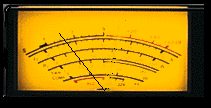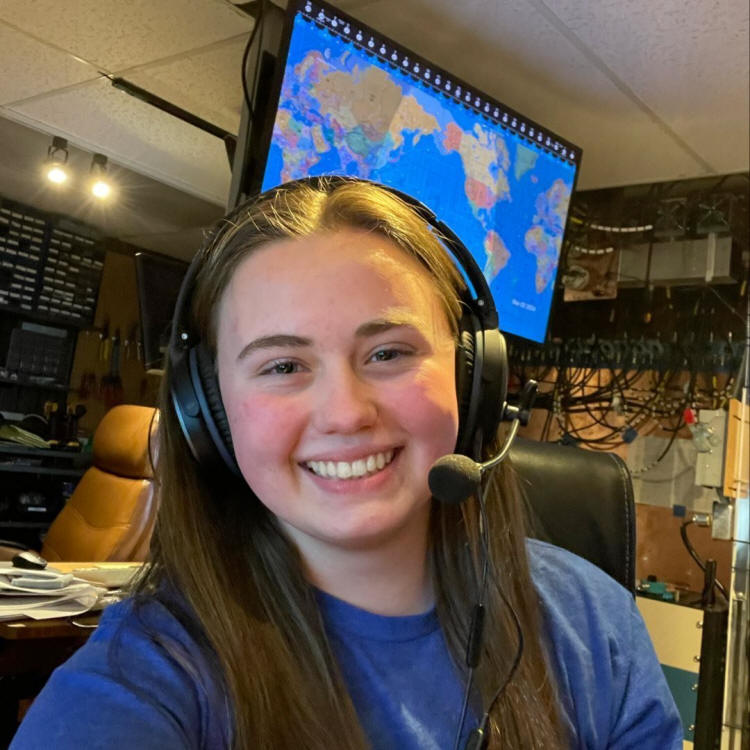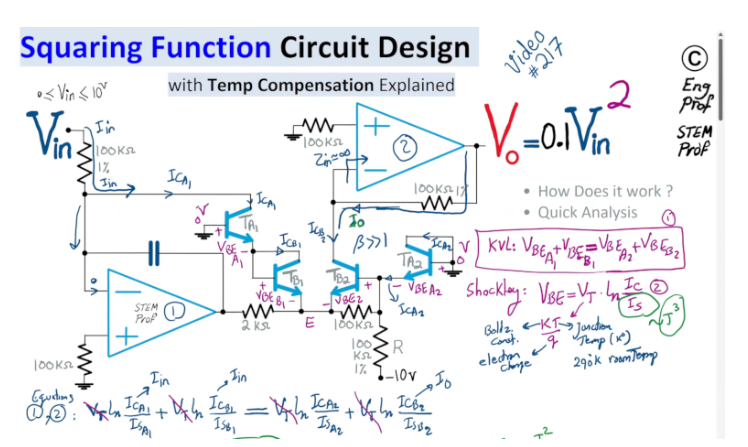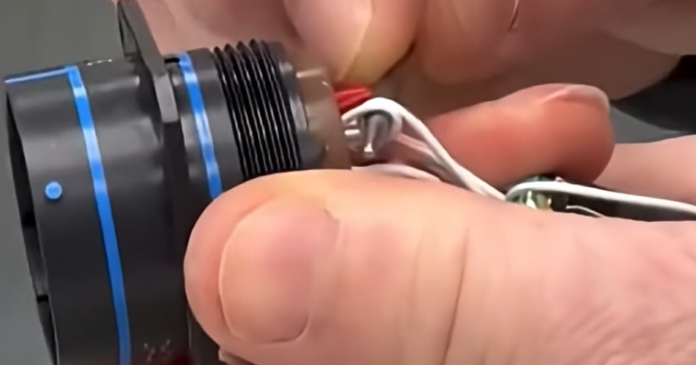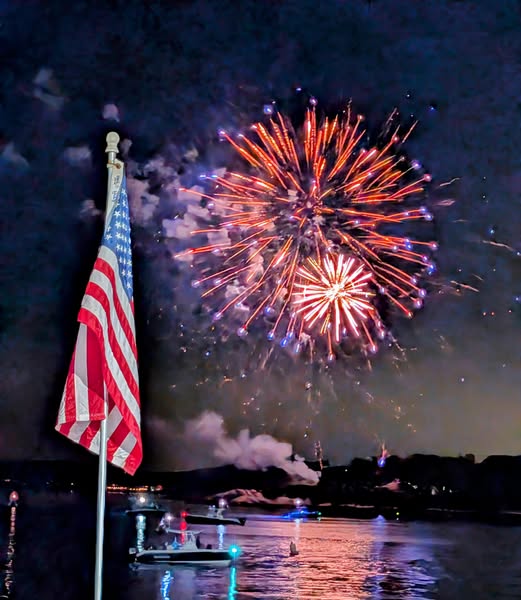|
|
|
|
|
EHAM QTH QRZ ARRL HRO ICOM KENWOOD YAESU ELBO ROOM COMMENTS
Bike Week in Laconia, NH WEDNESDAY EDITION: I sent my Yaesu FT7250 back for service, low output and ratty audio. I got it back in two weeks. They did not tell me what was wrong but charged .45 for a pot, $90 for labor, an $34 for postage..you got to be shitting me! I had another one new in the box I bought from a club member so now I have two. They are a rock solid radio, I have had the repaired radio in the truck for 7-8 years and it has worked great. A 50 watt 2/440 FM/C4FM radio....
NEW YORK – Katie Campbell, KE8LQR, of Columbiana, Ohio, has been selected as the 2025 Bill Pasternak WA6ITF Memorial Amateur Radio Newsline Young Ham of the Year. Katie, 17, is the daughter of Robert Campbell, KE8LYZ, and Colleen Campbell, KB8VAQ. Katie was introduced to ham radio at the age of 10 when her school started an amateur radio and electronics club. She was a fifth-grade middle school student at the time and quickly became licensed, advancing her way to an Extra Class ticket by the age of 11. An honor student heading into her senior year of high school, Katie is president of the Columbiana High School Amateur Radio Club (K8LPS). She said she was introduced to Morse Code early on and it became her favorite operating mode. “I learned CW through the Long Island CW Club,” she explained. “I’m pretty sure I found out about that just through my mom being on Facebook and seeing a posting about it right when they started.” Katie became an instructor for the group and still teaches classes on sending and receiving Morse Code over Zoom as well as to members of her school club. Katie attended Youth on the Air camps in Cincinnati in 2022 and Ottawa in 2023. Since then, she has been part of the planning staff for subsequent YOTA camps, and serves as a mentor to campers and handles public relations and social media postings for YOTA. She was part of the K3LR IOTA Dave Kalter Memorial Youth DX Adventure in 2023 and returned in 2024 to the K3LR site to lead the CW operations. Katie is very active on the HF bands and operates in the ARRL and CQ DX SSB and CW contests, ARRL Sweepstakes and CQ WPX, as well as Youth on the Air events. Katie has made presentations on the role of youth in amateur radio and contesting at the Dayton Hamvention, Orlando Hamcation and SEAPAC. Katie received the Radio Club of America’s Young Ham Lends a Hand Award and the Young Amateur Communications Ham Team Friendship Recognition Award. She also was selected as the ARRL Great Lakes Division Young Ham of the Year and has been serving as the ARRL Assistant Youth Section Coordinator for Ohio. Katie is the net control for the Ohio Section Youth Net, which she started four years ago. She also has served as the Young Ladies Radio League youth chairwoman and is a regular contributor to DX Engineering’s “OnAllBands” blog. In her Columbiana school life, Katie has served as class president, student council member, various honor societies and has participated in speech and debate, theater, academic competitions and the school band. Katie is the recent recipient of the Congress Bundestag Youth Exchange Scholarship. She will spend her senior year of high school studying abroad in Germany. The YHOTY award will be presented to Katie on the “Ham Nation” program on July 30, 2025 , by host Don Wilbanks, AE5DW. Amateur Radio Newsline and Yaesu USA are primary sponsors of the award, along with Heil Sound, Ltd. and Radiowavz Antenna Company. The Young Ham of the Year Award was inaugurated by William Pasternak, WA6ITF, in 1986. Upon his passing in 2015, Bill’s name was added to the award as a memorial to his commitment to recognizing the accomplishments of young people to the Amateur Radio Service.
TUESDAY EDITION: A nice start to the day with sun and heat, a good day to go to the dump with the limb I took down the other day to clear the way and mount a new 2/440 Diamaond vertical antenna. I have room now to mount another wire antenna. I have a new Cobra Senior and also a new G5RV I have been meaning to put up and compare. Ham Radio Publication Round-up
SWR
Amateur Television
Journal
The Communicator
The Logger's Bark
Zero Retries
The Random Wire
ARDC The Canadian Amateur (Membership required)
QST (Membership
required) US Radio Orienteering Champs CrownedThe 24th USA Radio Orienteering Championships were held June 19 – 22, 2025. The event was hosted by the Backwoods Orienteering Klub (BOK) at Morrow Mountain State Park in Albemarle, North Carolina, and drew about 30 athletes from across the United States and Canada. Radio orienteering is also known as amateur radio direction-finding, or ARDF. There were four World Championship-style races: Foxoring, Sprint, 2m Classic and 80m Classic. The Elite results:
Masters stand-outs:
Senior competitors: Every entrant in the M70 (men 70 and older) and W75 (women 75 and older) divisions completed at least three of the four demanding courses. Their steady performances — and obvious enjoyment — underscored the value of adding senior categories to future championships. Youth sweep: BOK junior Tiger Zhao claimed a perfect four-event sweep in M16 (men 16 and under) and teammates Anastasia Afonkin W16 (women 16 and under) and Adalia Schafrath-Craig W19 (women 19 and younger) also took golds — some with times that would have placed competitively in older divisions. Team USA will go on to compete at the 2025 IARU World Championships, to be held in Lithuania in August. The complete results of these championships, available at the BOK website, will be used for selecting the US team. Learn more about amateur radio direction finding on the ARRL ARDF page. Square a VoltageYour design task, should you decide to accept it: given an input voltage, square it. Ok, that’s too hard since squaring 8 volts would give you 64 volts, so let’s say the output should be 10% of the square, so 8 volts in would result in 6.4V. How do you do it? [Engineering Prof.] knows how and will show you what you can do in the video below. The circuit uses two op amps and some transistors. However, the transistors are used in a way that depends on the temperature, so it is important to use a transistor array so they are matched and will all be at the same temperature.
The math depends on the fact that the transistor response has a natural log term in it, and the property that the sum of two logs is the same as the log of the product of the numbers. Because of the matching transistors, many of the terms in the equation cancel out. Because the transistors are current devices, the transistor circuit’s output current is the input current squared divided by the output transistor’s collector current. Then it is just a matter of converting the voltage to a current and back again using the right scaling. There’s more to it, of course, but that’s the gist of it. You can dig into the math by watching the video. If the KCL references are fuzzy for you, here’s a refresher. Squaring a voltage would be pretty important for an analog computer. MONDAY EDITION: This weekend was picture perfect for all the 4th actvities, a great kickoff to a summer of fun here on the island. Are Service Loops a Good Idea?
Well, here’s an interesting idea: the service loop. Ever heard of it? We haven’t! In the video, the presenter explains the service loop serves two purposes: on the one hand it may provide strain relief, but chiefly these loops are installed so there will be extra available slack in the cable if you need to rewire it some day to change the configuration of your pinout. One major problem with the service loop may be that the single turn is enough to create an inductor which will then induce noise and cross-talk all over the place. Our rule of thumb is always to completely unroll wires and cables before using them. Do you have a theory about the benefits or problems with service loops? If you do, we’d love to hear what you think in the comments! If you’re interested in strain relief, we’ve covered that before, and you don’t need a service loop to do it! Check out Cheap Strain Relief By Casting Hot Glue In A 3D Print and Arduino Uno Strain Relief. FCC NEWS regarding recent budget
JULY 4TH WEEKEND EDITION: Nice parade, great cookouts, and the bonfire from the boat.... Peninsula amateur radio clubs look to connect with a younger generationFour clubs set up together in Hampton for 2025’s annual amateur radio field day.Virginia: The airwaves were especially active over the weekend as amateur radio enthusiasts gathered across the U.S. and Canada to showcase the hobby and, for some, try to best thousands of competitors over 24 hours. But while some clubs strived to rack up points for connecting with other operators around the continent, that wasn’t the focus for a quartet of Peninsula clubs that set up behind Northampton Christian Church in Hampton. “We’re not about winning, we’re just having fun,” said Chris Hosman, president of the Hampton Public-Service Team. The annual field day is considered amateur radio’s “open house” by ARRL, the National Association for Amateur Radio, which organizes the event on the fourth weekend of June. Clubs set up transmitters and antennas in public places where licensed amateur radio operators, also called Hams, demonstrate the tech’s capabilities to the uninitiated. Some Hams will spend the day feverishly making as many contacts with other operators as possible. The more contacts made, the more points a club earns. Contacts made on digital modes are worth more than voice contacts. Clubs can also secure points through youth participation, using solar power and getting visited by elected officials during field day. Final scores are released in a few months, ranking clubs by class as determined by the number of active transmitters and the type of set-up used. Don Mertz, vice president of the Hampton Public-Service Team and Southern Peninsula Amateur Radio Klub, said the competition used to be a bigger deal locally. “It was pretty normal for us to get 1,000 contacts in 24 hours,” he said. This year, he said, “we’ll end up with 200 or so.” Emergency preparedness is more important now for the four local clubs, which were rounded out by the Newport News Amateur Communications Team and the Peninsula Amateur Radio Club. Mertz said that’s partly a result of the area’s geography and storm potential, but emergency communications is also a throughline in the amateur radio world. It’s common for operators to support emergency management operations around the U.S., with Hams serving as a communications backup during hurricanes and severe weather events. Networks of licensed amateur radio operators were crucial for reporting damage, coordinating assistance and relaying messages when Hurricane Helene devastated North Carolina in 2024. “Amateur radio operators can put up in a field the ability to talk to people anywhere in the world if they want to” with their gear and a battery or power generator when the electricity goes out and other modes of communication have failed, Hosman said. The Hampton Public-Service Team and Newport News Amateur Communications Team support the emergency management offices of their cities, and they share members with the two standard radio clubs on the Peninsula, several of whom are former military and first responders. Hosman said getting that network well-acquainted with one another is a big part of field day. “Rapport is built up in these kinds of events,” he said. “Somebody comes up on the radio and is reporting something ridiculous, if we don’t know that guy then we probably aren’t going to trust his report.” Finding new recruits is crucial for maintaining those networks, and for keeping amateur radio alive. The number of licensed Hams in the U.S. has fallen fast during the past five years, totaling 743,005, according to ARRL. That’s down more than 35,000 from 2021, wiping out gains made since 2014. Virginia has lost more than 800 licensed Hams since 2021. It’s why getting younger people exposed to the hobby and potentially into a club, is a focus. Mertz said getting younger newbies to step up as mentors for younger prospective Hams will help. “So instead of the 15-year-old having to listen to the 75-year-old, he can listen to a 20-year-old”, he said. Siblings Mary and James Wright were at field day, both licensed as of February. Fifteen-year-old Mary said the new youth movement by ARRL could pay off if done well. Her brother, 17-year-old James, who sped his way to the highest license offered to amateurs by April, agreed. “The more people that get involved with Ham radio, the more it’ll get out there,” he said. “I’ve made contact with someone in China over Ham radio and I just thought that was so cool – because that was, like, a 7000-mile-away contact.” We are launching the boat today, just in time for the bonfire on the beach tonight. You can anchor just offshore and watch the bonfire, fireworks, and band play at the American Legion bandstand....what a country!
Voile des Légendes Dunkerque 2025 Special EventThe Radio Club de l’Agglomération Dunkerquoise – F8KGS – is proud to announce the activation of a special event amateur radio station: TM5VDL, on the occasion of the “Voile des Légendes Dunkerque 2025” maritime festival. Held every few years in the historic port city of Dunkerque, northern France, Les Voiles de Légende is a celebrated gathering of classic and legendary sailing ships from across Europe. The city comes alive with nautical pride, music, maritime culture—and in 2025, with radio waves! This special callsign TM5VDL will be active from July 5th to 19th, operated by members of F8KGS Radio Club. Operators will be mainly active on HF, sharing the spirit of this majestic event with amateurs worldwide. A special QSL card will be sent via bureau. Join us on the air and help us celebrate the union of maritime heritage and amateur radio! Source: Radio Club de l’Agglomération Dunkerquoise 2025 ARRL Field Day a SuccessTens of thousands of hams are celebrating a successful 2025 ARRL Field Day! The largest annual amateur radio event is also one of the most beloved, as shown by countless social media posts. Activity was high, with 1536 sites in the ARRL Field Day Site Locator, and that doesn’t even count home stations, portable operations, or other participants. “There’s a reason that hams look forward to ARRL Field Day,” said ARRL Public Relations and Outreach Manager Sierra Harrop, W5DX. “It is easy to see how much fun people have during the event. Across the country, people come together in town squares, public parks, green spaces, and other locations – all to celebrate the joy of amateur radio and to share it with others,” she said. PHOTOS: See 2025 ARRL Field Day from around social media On the town green in West Brookfield, Massachusetts, between Springfield and Worcester, the Quaboag Valley Amateur Radio Club held its activation front and center in the postcard town. There was a steady line of onlookers visiting the setup that stretched out for several hundred yards. Many of them sat down to try their hand at the GOTA (Get On the Air) station. Nestled across from an antique church with a white steeple, and on green grass that surrounds a fountain, the hams brought a steady call of “CQ Field Day” to the quiet hamlet. Aboard the International Space Station, Astronaut Jonny Kim, KJ5HKP, was active. Social media and YouTube show several clips of hams talking with Kim. James Walker, KC1UYZ, shared a video of his contact with Kim to Instagram and other platforms. “KC1UYZ, welcome to the International Space Station,” said Kim. A quick rest of the contact was followed by enthusiastic whoops from Walker, who was elated to have talked with an orbiting astronaut. W1AW, the Hiram Percy Maxim Memorial Station at ARRL Headquarters in Newington, Connecticut, was active for the event. The station’s three operating studios were configured as a 6F-class station. On Saturday afternoon, and well into the overnight, ARRL Education and Learning Support Specialist Max Freedman, N4ML, was operating alongside Audrey McElroy, KM4BUN. “It is always great to help people get W1AW in their logs,” he said. Freedman is an experienced contester, but this was his first operating event at the historic station. “It is such an honor to operate as W1AW,” he said. McElroy was honored as the Bill Pasternak, WA6ITF, Memorial Amateur Radio Newsline Young Ham of the Year in 2022. She’s in Connecticut for an internship in support of her electrical engineering degree – a career that her ham radio background has inspired. ARRL Contest Program Manager Paul Bourque, N1SFE, reports nearly 2500 entries have already been received via the online entry form at field-day.arrl.org/fdentry.php. “We are encouraged by the surge in early submissions, but there’s still time to get entries in,” he said. Bourque noted that Field Day participants should check that all the required supporting documentation related to their entries has been received by checking the Entries Received web page at field-day.arrl.org/fdentriesrcvd.php. If the status of your entry is listed as Pending Documents, one or more of the required documents still needs to be submitted to complete your entry. Entrants may use the link provided in the confirmation email they received to add additional documents or to modify their entries. Field Day entries must be received by Tuesday, July 29, 2025. Complete information about ARRL Field Day is available at www.arrl.org/FieldDay Amateur Radio Newsline Report
THURSDAY EDITION: My favorite holiday coming up along with Thanksgivng, God Bless America! ARRL® Logbook of The World® Return to ServiceARRL The National Association for Amateur Radio® will return Logbook of The World® (LoTW®) to service at 10:00 AM EDT on Wednesday, July 2, 2025. We are happy to be bringing the upgraded LoTW servers online, as we know radio amateurs around the world rely on LoTW to receive QSLs and apply for awards. The improvements we made will make no change in the visual appearance of LoTW but will provide e… Read more American Radio Relay League | Ham Radio Association and Resources – Read More Voile des Légendes Dunkerque 2025 Special EventThe following is a message from the Radio Club de l’Agglomération Dunkerquoise: The Radio Club de l’Agglomération Dunkerquoise - F8KGS - is proud to announce the activation of a special event amateur radio station: TM5VDL, on the occasion of the “Voile des Légendes Dunkerque 2025” maritime festival. Held every few years in the historic port city of Dunkerque, northern France, Les Voiles de Légende is a celebrated gathering of classic and legendary sailing ships from across Europe. The city comes alive with nautical pride, music, maritime culture—and in 2025, with radio waves! This special callsign TM5VDL will be active from July 5th to 19th, operated by members of F8KGS Radio Club. Operators will be mainly active on HF, sharing the spirit of this majestic event with amateurs worldwide. A special QSL card will be sent via bureau. Join us on the air and help us celebrate the union of maritime heritage and amateur radio! Ham radio connects the worldRussell Sawyer is a retired doctor who travels the world several times a week. He’s down in his basement searching for other ham radio operators. "Sometimes this is like fishing," he says. "You wait patiently for someone to talk to." There are as many as 30,000 operators in Virginia, talking about the weather, the family, the gear they use to send greetings around the world. To broadcast on frequencies reserved for amateur operators, he had to take a test and pay $15 to the FCC. He spent $400 on some used equipment, ran a hundred-foot antenna from one tree to another in his backyard, and he was in business. This weekend, he plans to join other hams at the Earlysville Fire Station for a 24-hour marathon – hoping to interest others in his hobby. "We’ve got some young people involved with this -- they’re in high school and have a ham radio license. In fact, I think there’s one fellow in the club who will bring several of his students to the field day and is going to set up an educational activity and do some soldering and go on the air, and we’ve got some older people who are just interested in taking it up as a hobby – learning something new, a chance to learn a new language: Morse code." It’s fun, he says, and should the grid go down in an emergency, amateur radio operators could provide essential communications with a battery. The Albemarle Amateur Radio Club will be on the air from 2 p.m. Saturday to 2 p.m. Sunday and will offer newcomers a chance to try their hand at ham radio.
HAMS YOU MIGHT KNOW- ALIVE AND SK K1TP-
Jon....Editor of As The World
Turns....
SILENT KEYS Silet Key
KA1BXB-Don...Regular
on 3900 mornings....just
don't
mention
politics
to
him,
please! |


